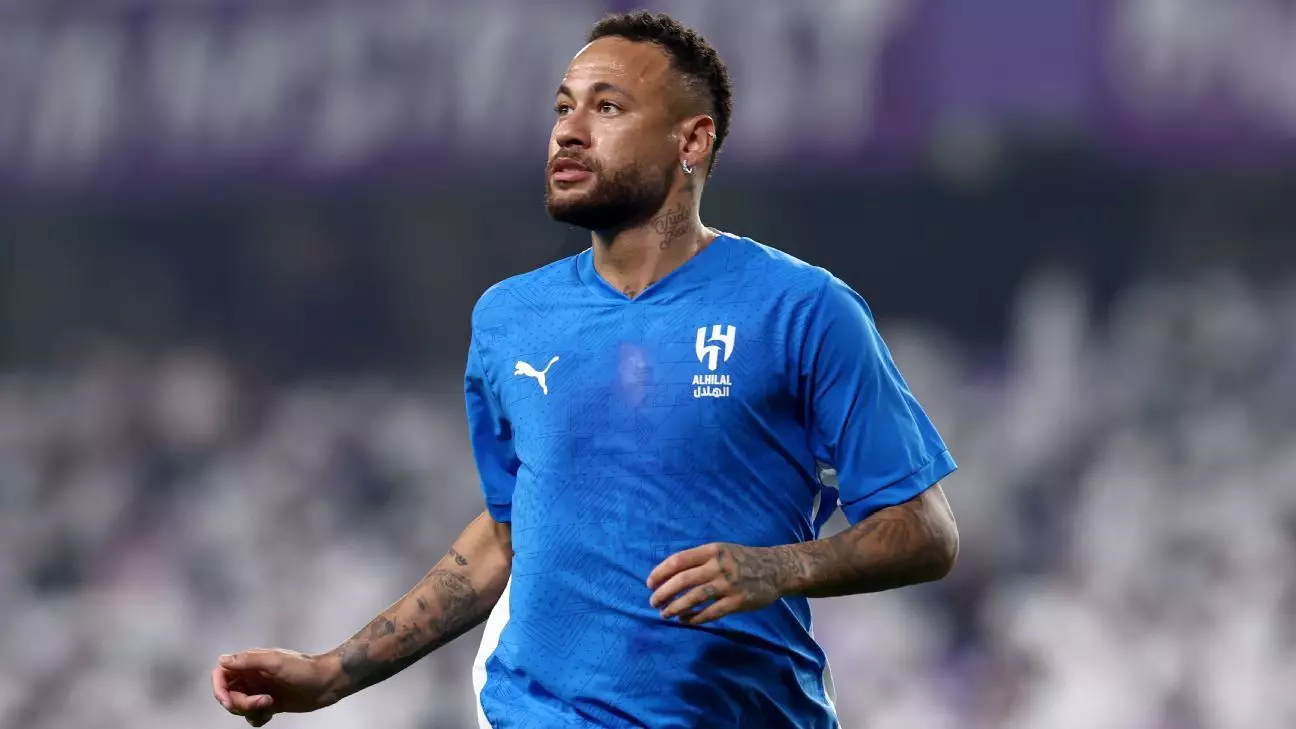The saga of Neymar’s professional career is characterized by unprecedented highs and equally significant lows. As one of the most prominent figures in football, the Brazilian forward has dazzled fans with his talent since his debut at Santos in 2009. However, his journey took unexpected turns, especially during his recent tenure at Al Hilal in Saudi Arabia. Despite the glitz and glamour associated with his name, Neymar is now reportedly on the brink of a return to his roots at Santos. This potential comeback raises questions about his career trajectory, the fit of elite athletes in various leagues, and the politics of modern football.
Neymar’s departure from Paris Saint-Germain (PSG) for Al Hilal in the summer of 2023 marked a significant shift in both his career and the football landscape. With a hefty transfer fee of approximately $97.6 million, expectations were sky-high. Unfortunately, injuries plagued his time in Saudi Arabia, with a torn anterior cruciate ligament and subsequent hamstring issues reducing him to just a handful of appearances. This lack of competitive play has not only hampered his performance but also threatened his position on the national team, where he has been a fixture due to his illustrious career.
Santos was where Neymar first captured global attention, leading the club to a Copa Libertadores title in 2011. A return signifies a full-circle moment in an athlete’s narrative—a chance to reestablish himself in familiar turf and rekindle the form that once made him a phenomenon in world football. The reported six-month contract, potentially extendable by another year, indicates a strategic yet cautious approach. Neymar aims to regain his form while minimizing financial losses following the probable termination of his contract with Al Hilal.
However, the negotiation process reflects a complicated scenario. Though ESPN reports that discussions are ongoing, financial considerations complicate the matter. Neymar would potentially walk away from around $65 million by terminating his current contract. While he’s exploring ways to mitigate the financial blow through investment opportunities related to Santos shares, these avenues could prove arduous, particularly in the short term.
Neymar’s pursuit of a return to Santos raises broader questions in modern football regarding age, injury management, and the impact of high-stress environments, particularly in leagues that may not align with a player’s peak performance. At 32, Neymar is hardly at his limit, but the pressures of consistently maintaining top-tier performance in a grueling, physically demanding sport like football are undeniable.
Furthermore, Neymar’s return to a club where he began his professional journey spotlights how the passage of time can redefine an athlete’s career prospects. It speaks to the evolving narrative of many young stars today—whether they will emulate Neymar’s path or struggle in the limelight with disappointing performances in lesser-known leagues.
As fans and analysts follow Neymar’s next steps, one can’t ignore the impacts these decisions have beyond just personal implications; they set precedents for future generations of footballers. Neymar’s intricate dealings with giants like PSG and Al Hilal shape how young athletes perceive contracts, career progression, and the balance between financial stability and performance. It’s a delicate dance—can emerging talents focus solely on football while navigating lucrative but potentially distracting contracts?
Should this move to Santos materialize, it could serve as a litmus test for Neymar, possibly re-establishing him as a top talent and revitalizing not just his career but also inspiring a new generation of players to reconsider their career choices and destinations.
As Neymar grapples with his next chapter, it reflects the intricate dynamics of modern sports where talent and circumstance intertwine, often leading to unexpected yet enlightening turns in a career rich with questions of identity, legacy, and redemption.

